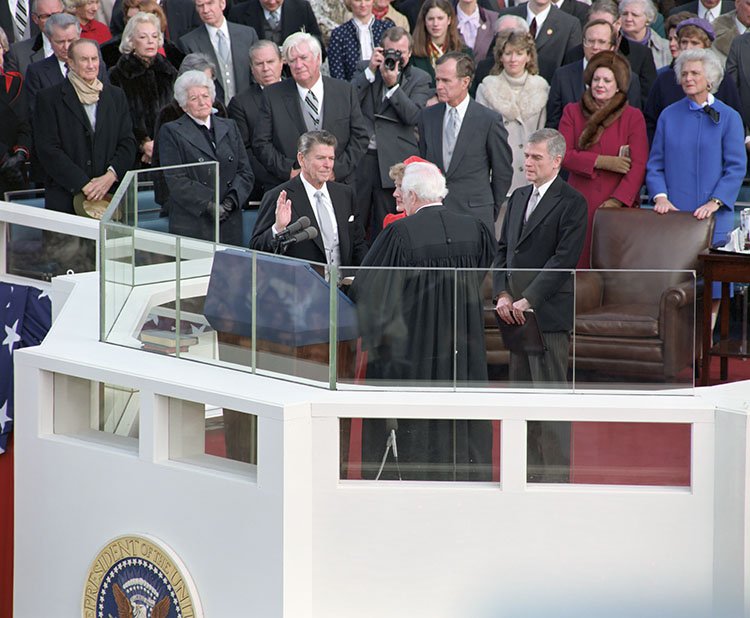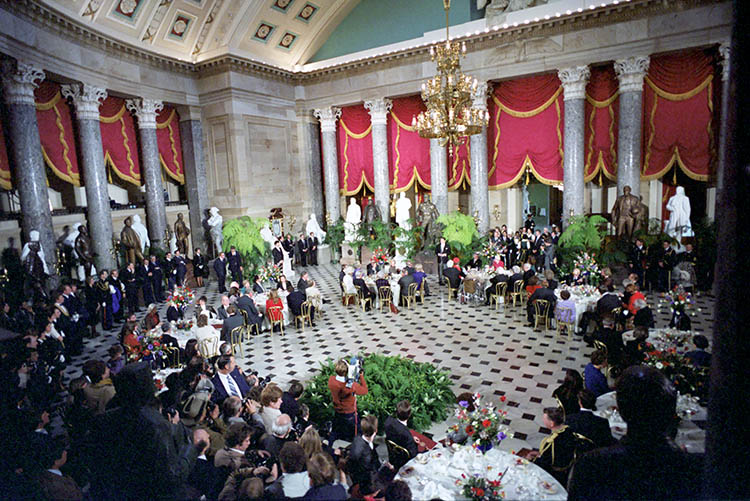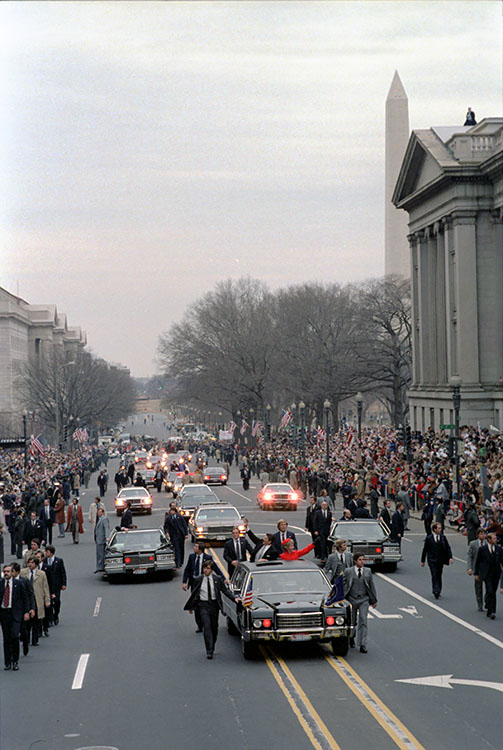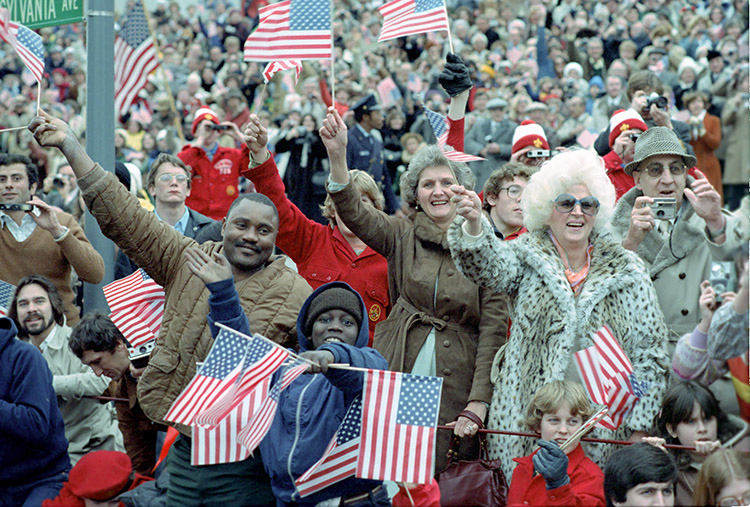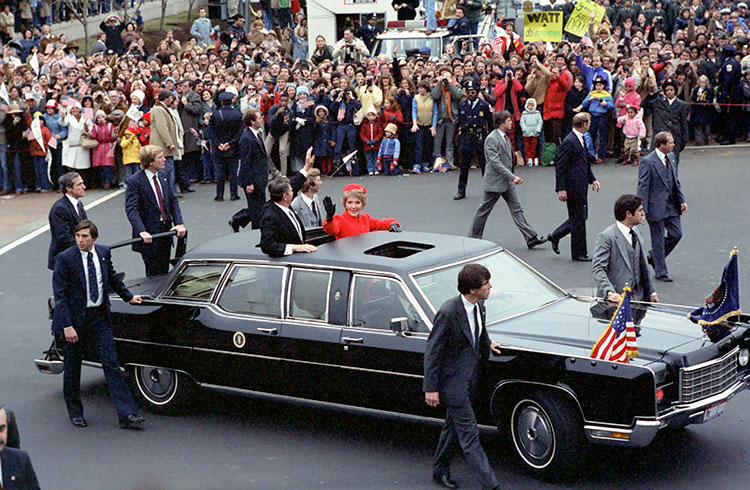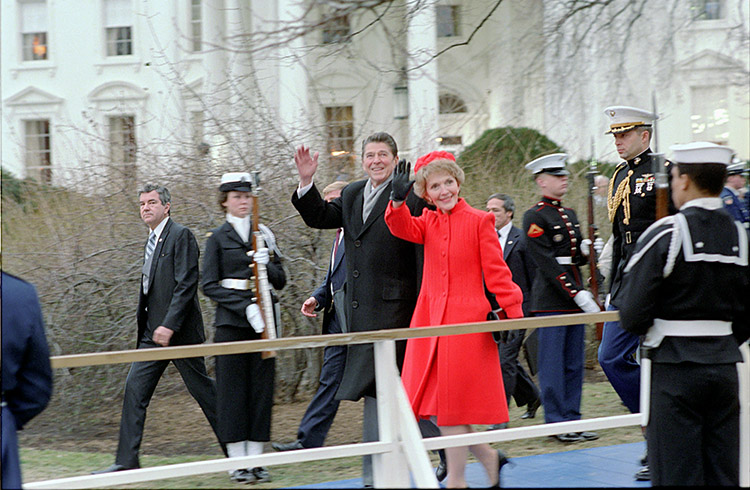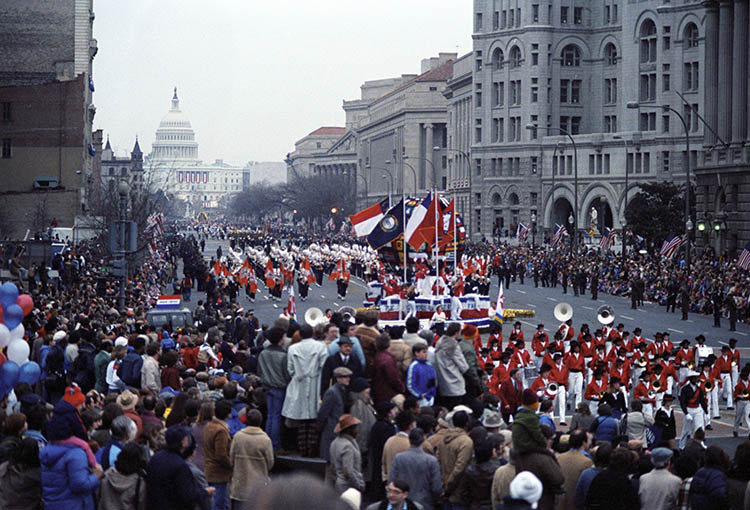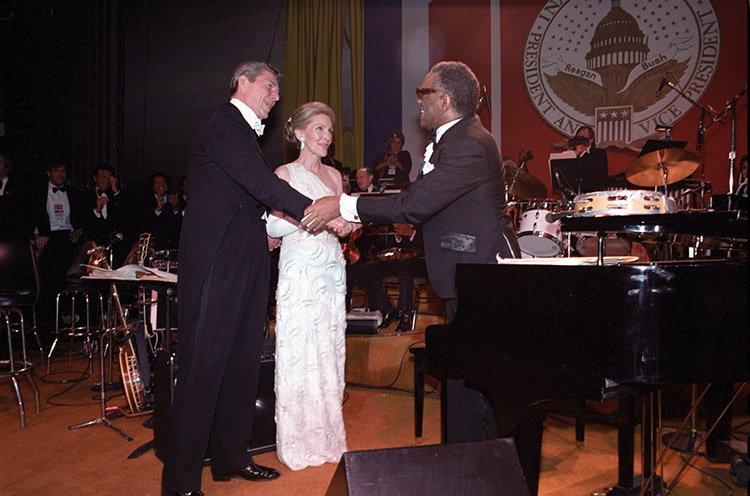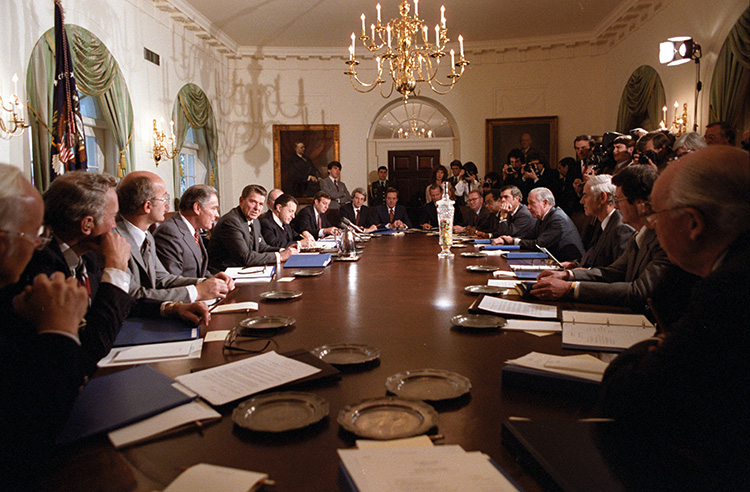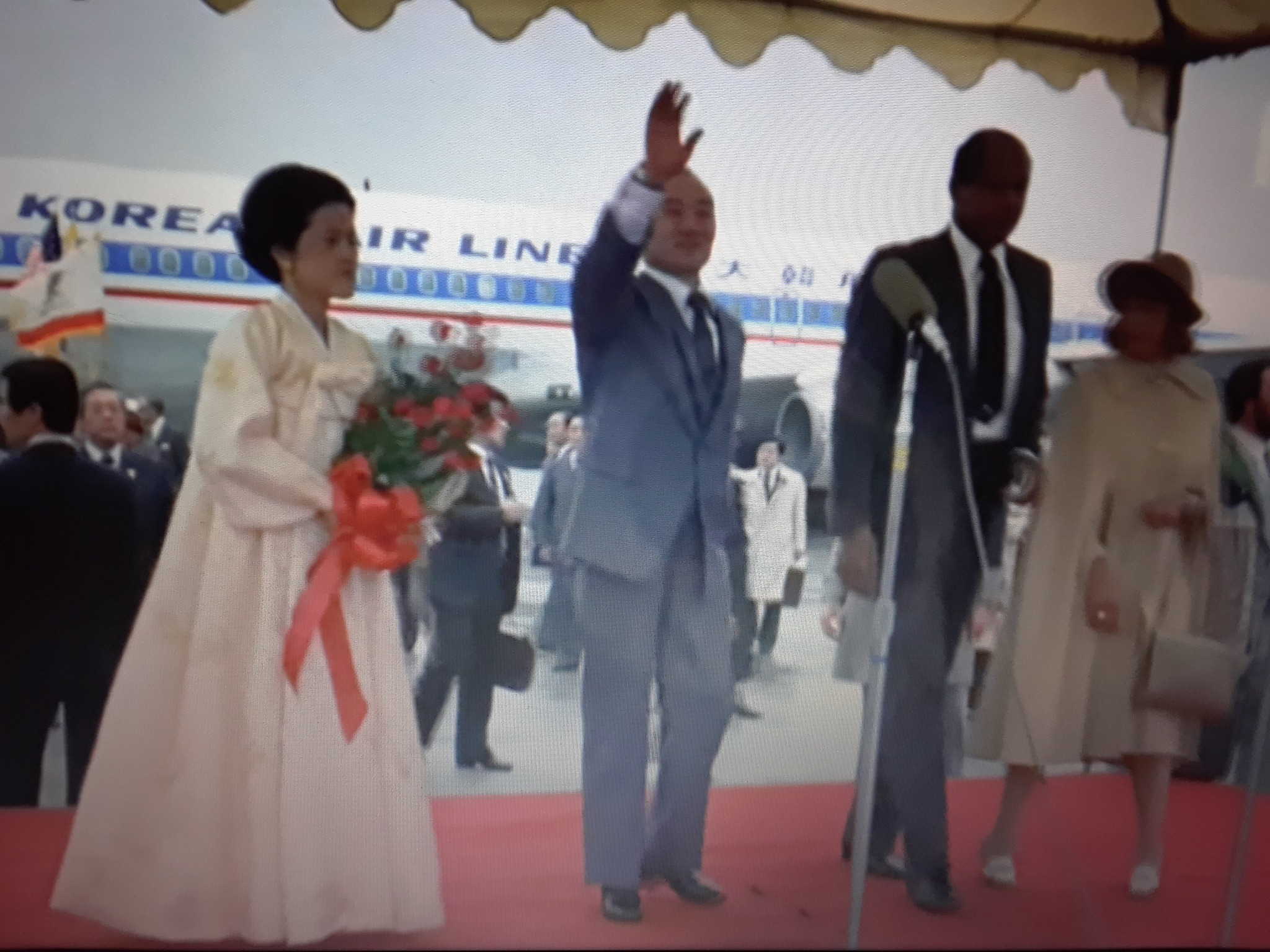SCHEDULE OF THE 1981 INAUGURATION PROGRAM
Tuesday, January 20, 1981
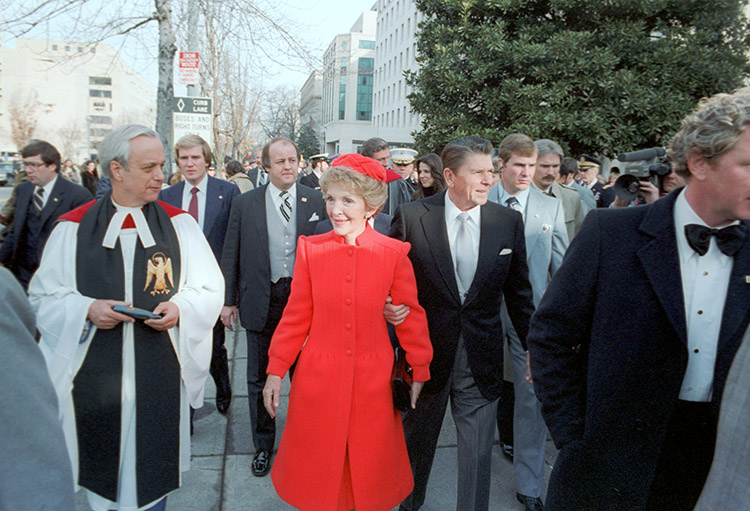
President-elect Ronald Reagan and incoming First Lady Nancy Reagan walking through Lafayette Street and heading towards Saint John's Episcopal Church.
Tuesday, January 20, 1981

President-elect Ronald Reagan and incoming First Lady Nancy Reagan walking through Lafayette Street and heading towards Saint John's Episcopal Church.
*9:30 AM EST: Church service at Saint John's Episcopal Church officiated by the Reverend Billy Graham and Reverend Dr. John Moomaw.
*9:55 AM: President-elect Ronald Reagan and his wife, Nancy along with Vice-President-elect George HW Bush and his wife, Barbara leave Saint John's Episcopal Church. The Reagan's will return to the Blair House.
*10:15 AM: The Reagan's and Bushes expected to arrive at the White House; both outgoing President Linwood Holton and outgoing Vice President Edward W. Brooke, III including their spouses are expected to greet them.
*10:40 AM: US House of Representatives and United States Senate both convene and will immediately recess to walking through the inaugural platform on the US Capitol West Front Grounds.
*11:05 AM: Presidential motorcade will leave the White House for the short trip to the US Capitol, where it'll arrive on the East Front Grounds.
*11:15 AM: Members of the Presidential party will be greeted by the House and Senate Sergeants-at-Arms; President-elect Reagan and outgoing President Holton will be escorted to separate holding rooms.
*11:45 AM: Inauguration Program begins; Marine Corps Band performs music; Invocation.
*11:55 AM: Vice-President-elect Bush will be sworn in as the 44th Vice President of the United States by Supreme Court Associate Justice Potter Stewart; "Hail Columbia" will be played soon afterwards.
*12:00 PM: President-elect Reagan will be sworn in as the 41st President of the United States by Supreme Court Chief Justice Warren Burger. "Hail to the Chief" played by the Marine Corps Band; 21 Cannon Salute will be fired by the Presidential Salute Battery Unit; Inaugural Address by President Reagan.
*12:25 PM: Benediction and National Anthem.
*12:30 PM: Presidential party leaves the platform; the Former President Holton and former Vice President Brooke including their spouses are escorted to the East Front Grounds, where they'll be driven in limousine, which takes them to Andrews Air Force Base in Camp Springs, Maryland: where a final 21 Cannon Salute will be fired and Honor Guard Inspection of the US Armed Forces will occur, which former President Holton will review the troops for the final time before boarding Air Force One, which will take the Holton's to Richmond, Virginia.
Former Vice President Brooke will be taken via train to a private party in the suburbs of Annapolis, Maryland.
*President Reagan will go to a room off the Senate chambers and formally sign papers nominating members of his Cabinet for the United States Senate to confirm.
*1:00 PM: Presidential party attends luncheon with Congressional leaders honoring President Reagan and Vice President Bush inside Statuary Hall of the US Capitol.
*2:00 PM: President Reagan, Vice President Bush and their spouses will leave the Capitol afterwards; enter limousines and joining the Inaugural Parade to the White House.
*4:00 PM: Band Concert and the Inaugural Parade begins that will include marching bands, floats from 51 States as well as other surprises soon.
*9:00 PM: Inaugural Balls being held at the following:
Washington Hilton; Sheraton Washington; Shreham; Kennedy Center; Pension Building; Smithsonian Museum of Natural History; Smithsonian Museum of American History; Smithsonian Air and Space Museum.
Last edited:


